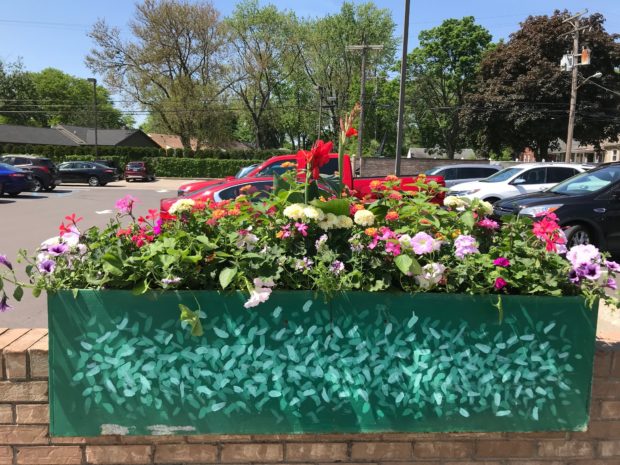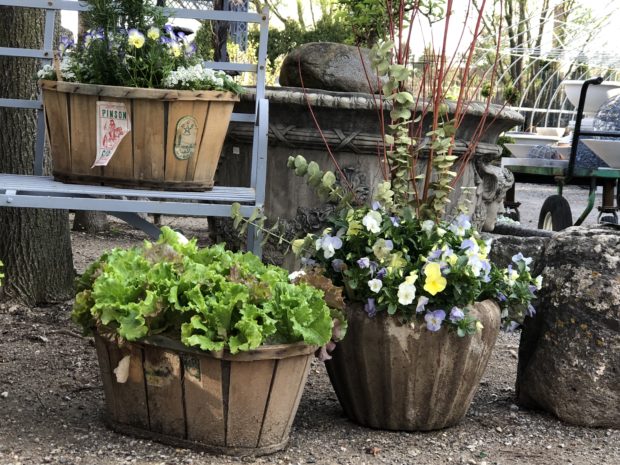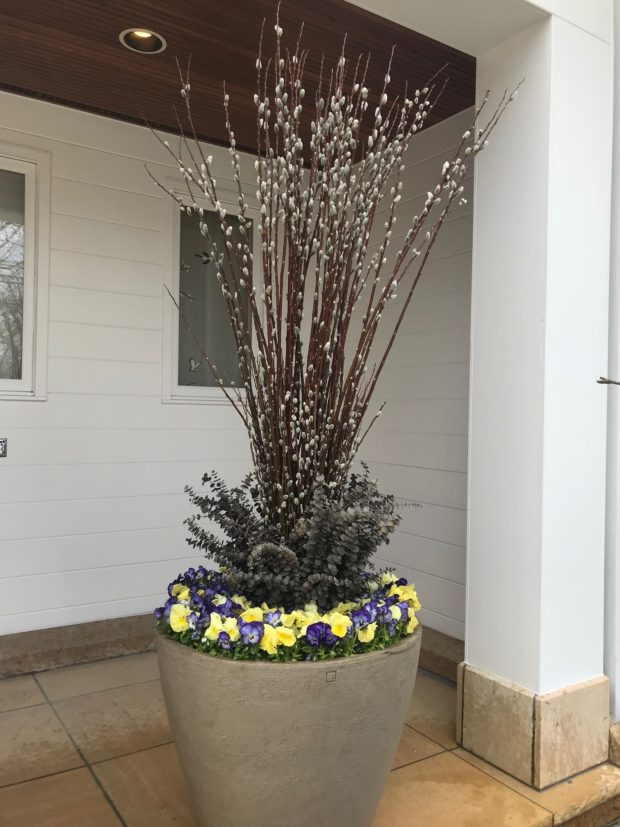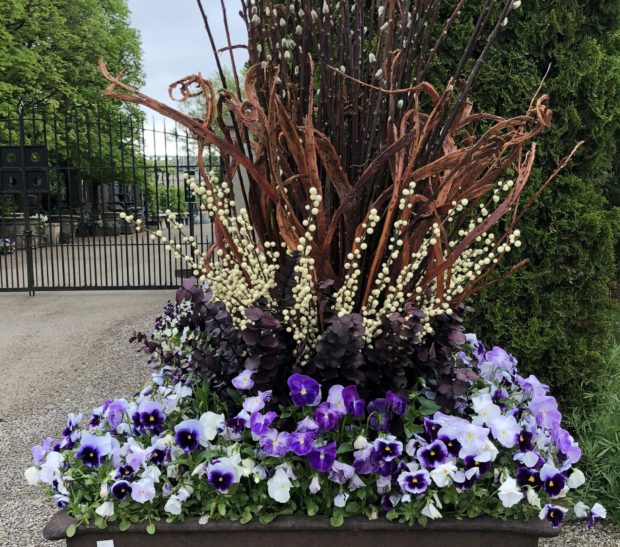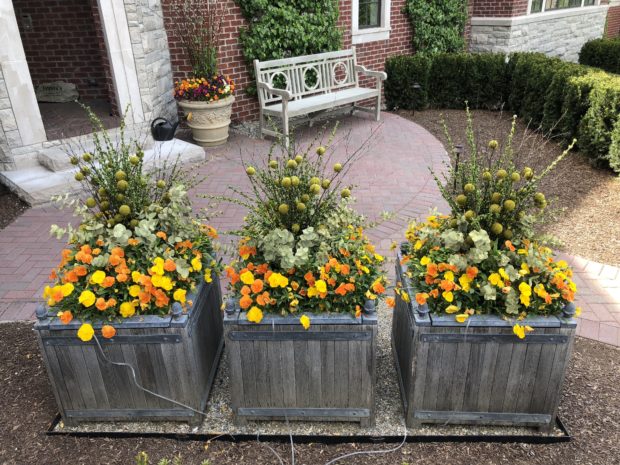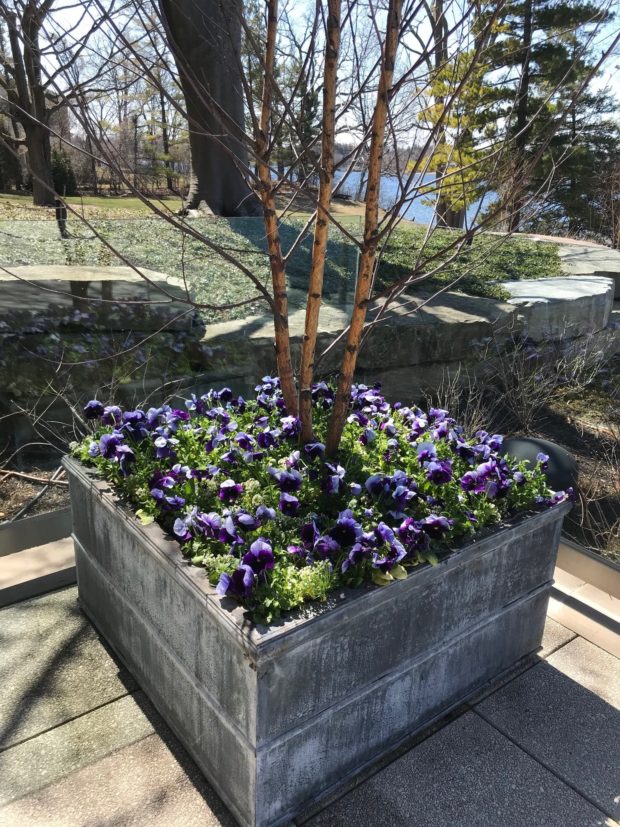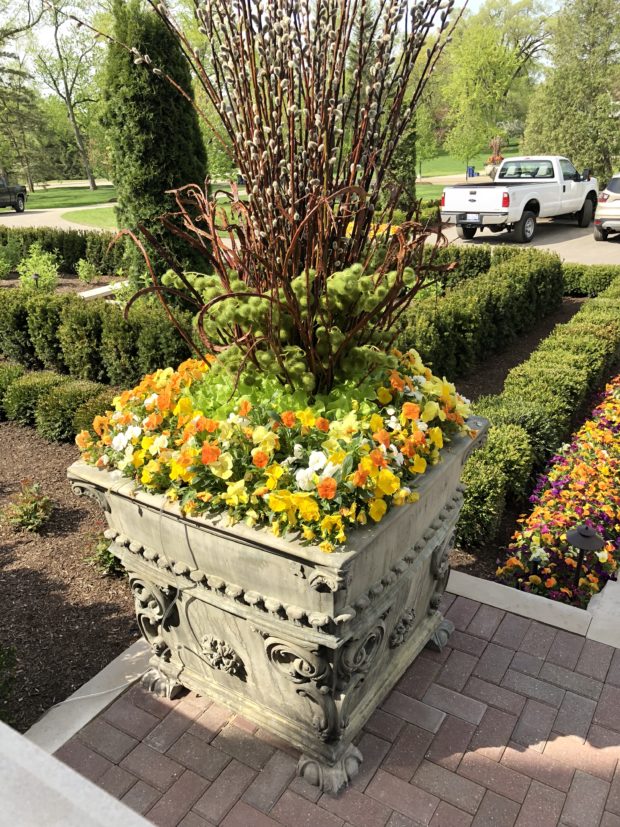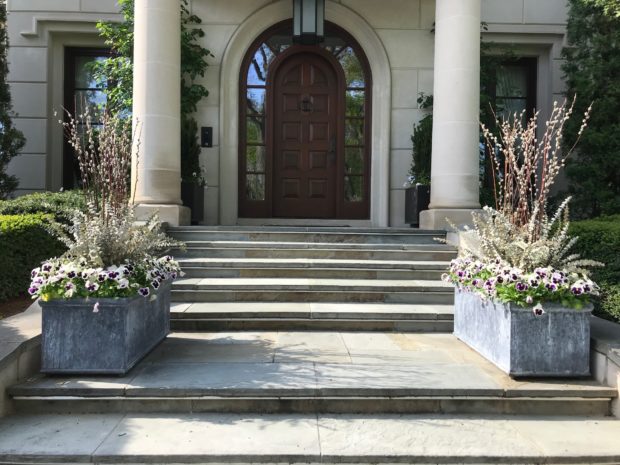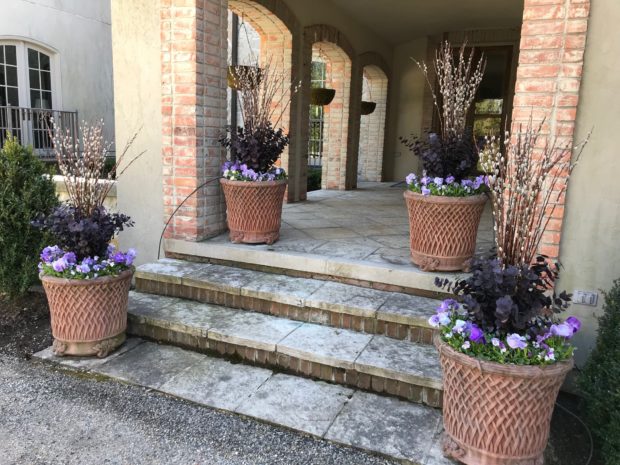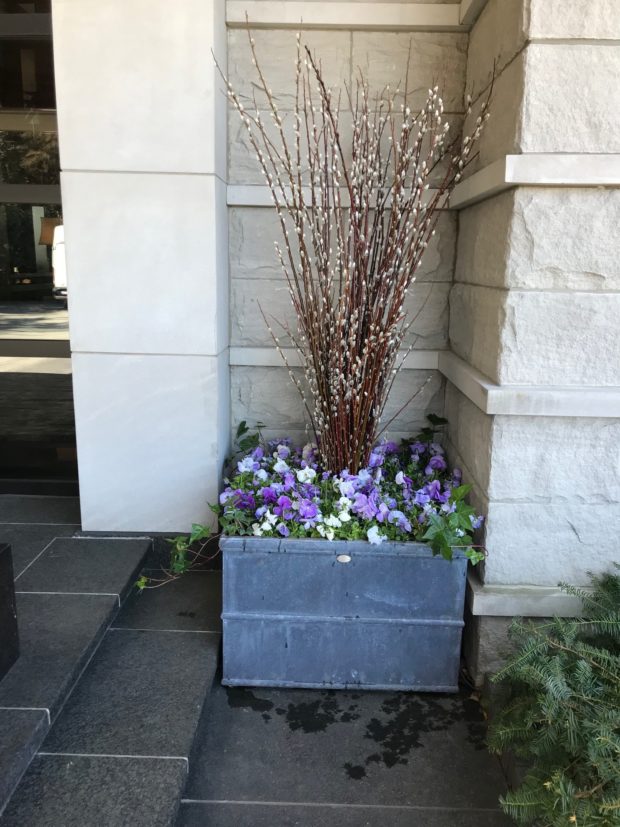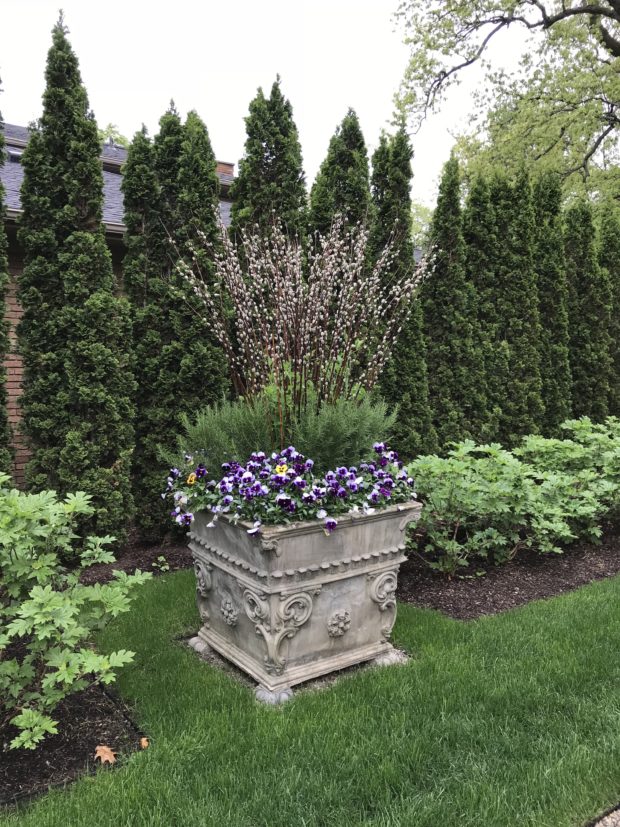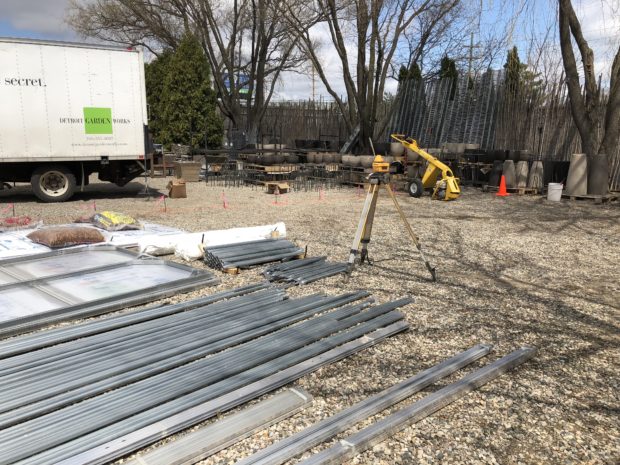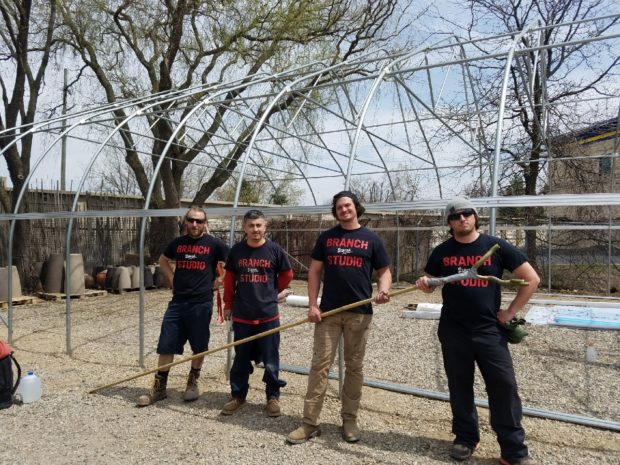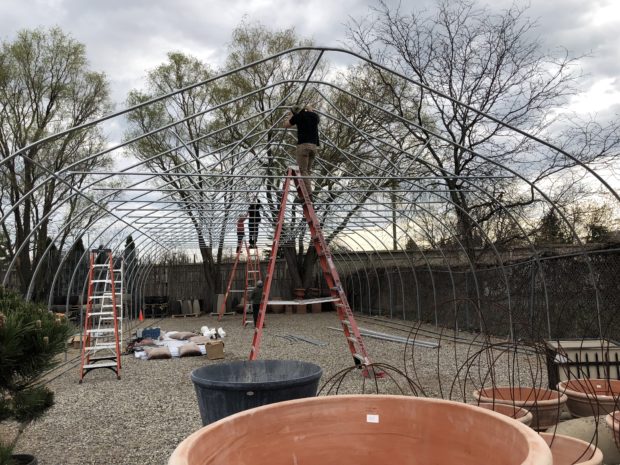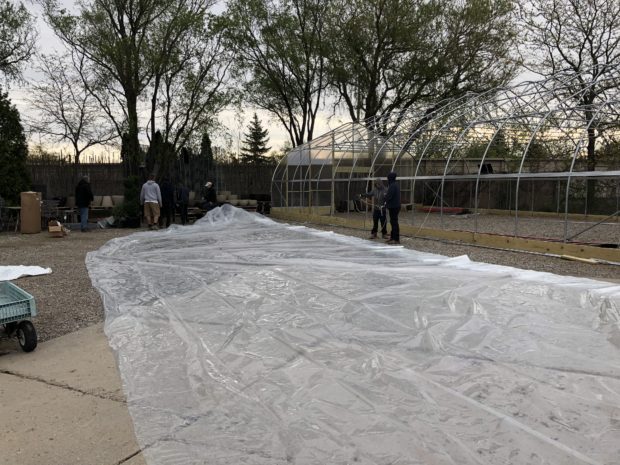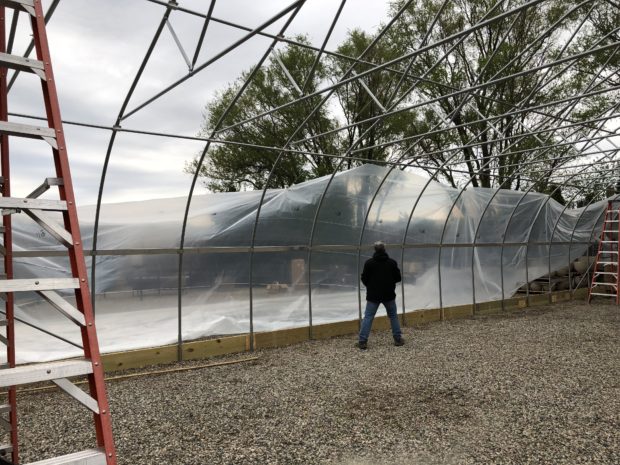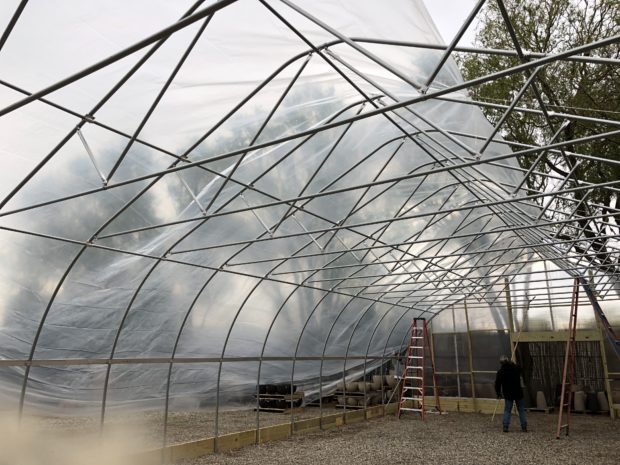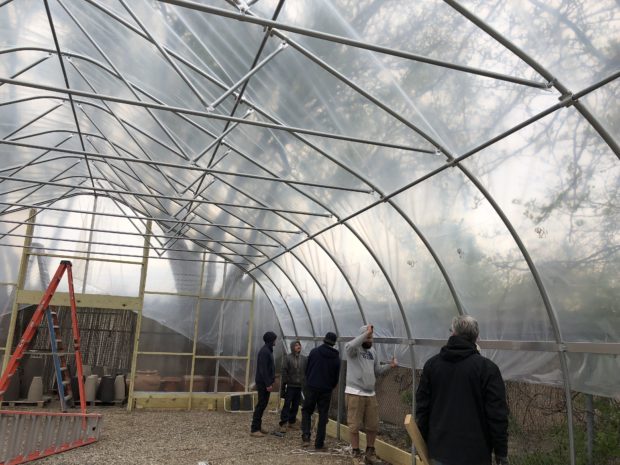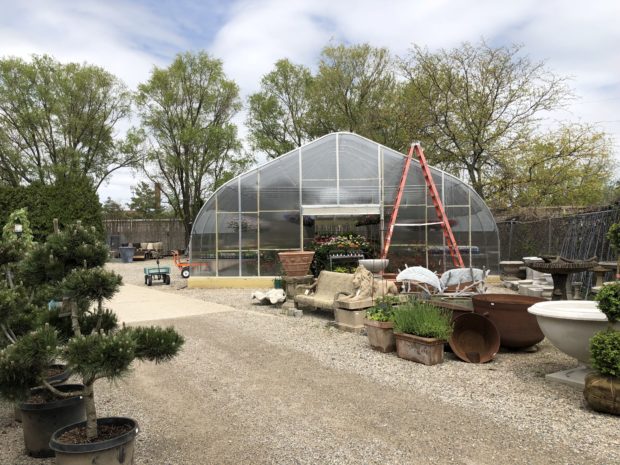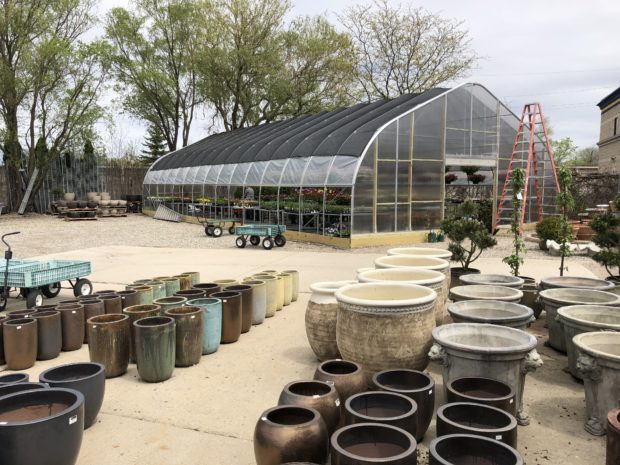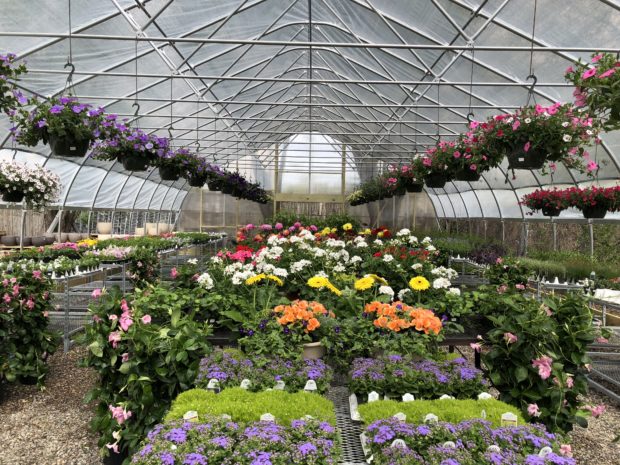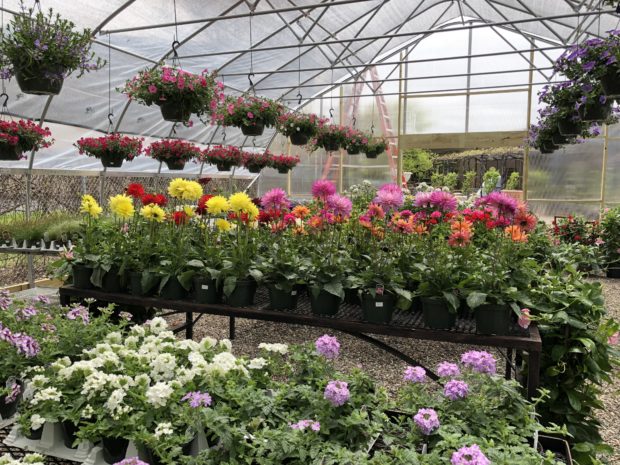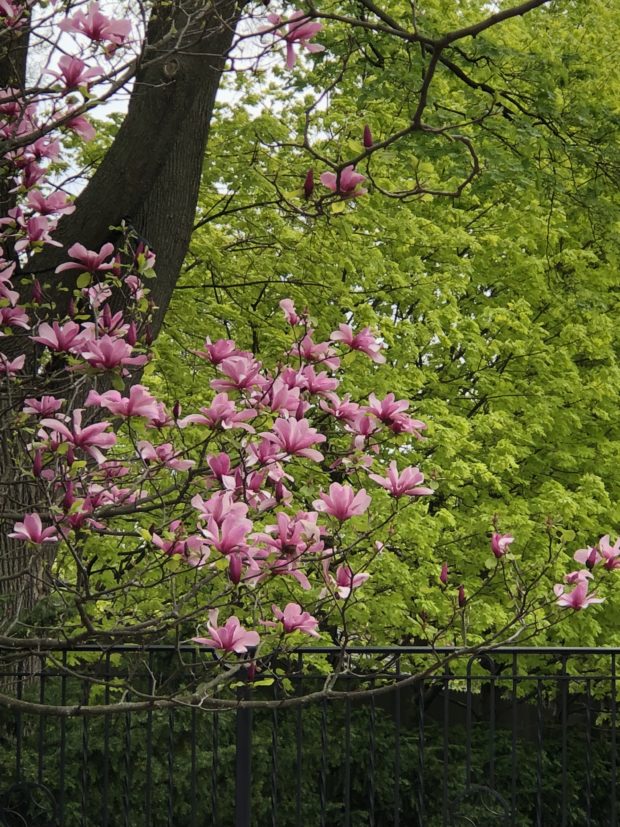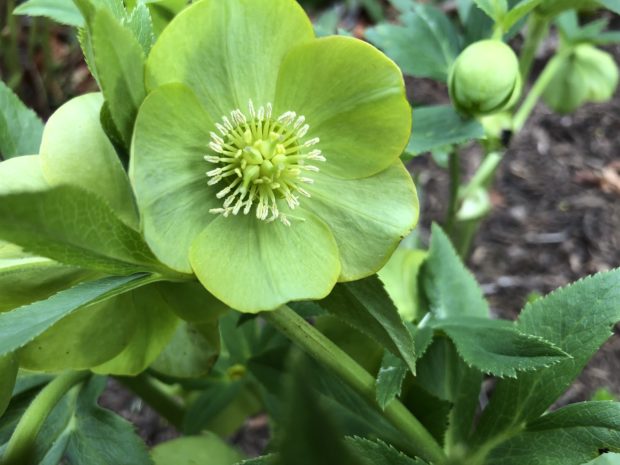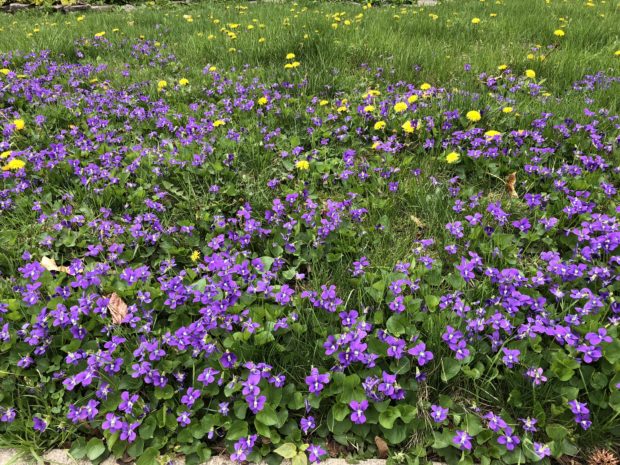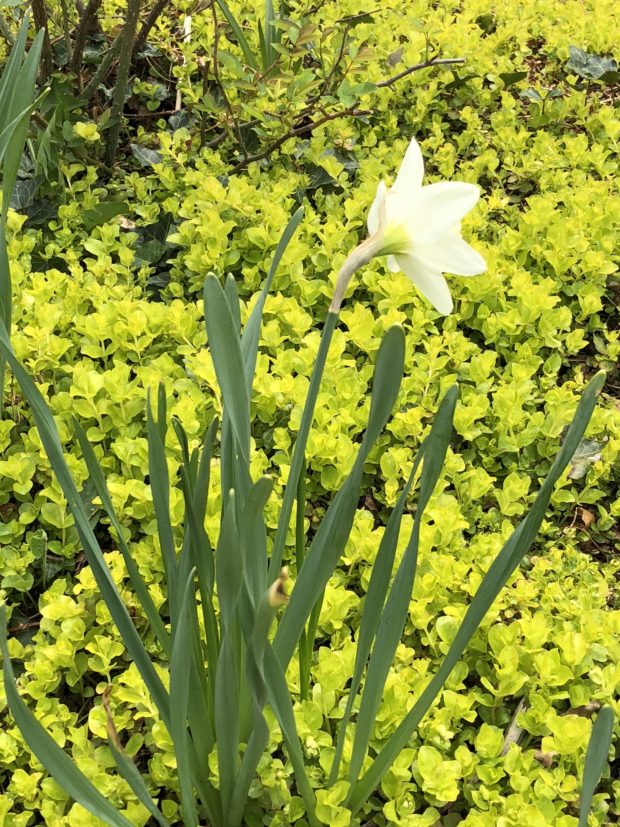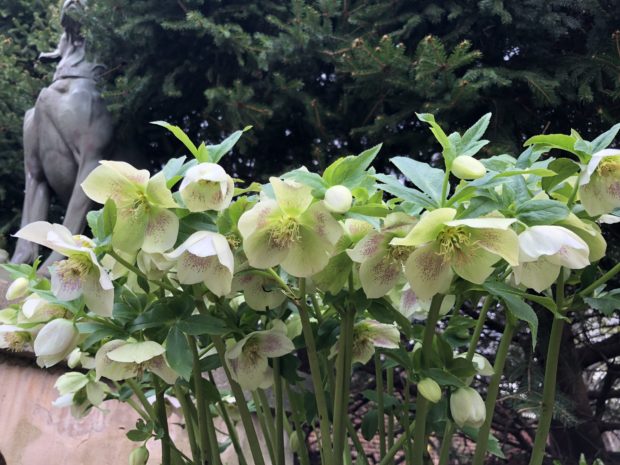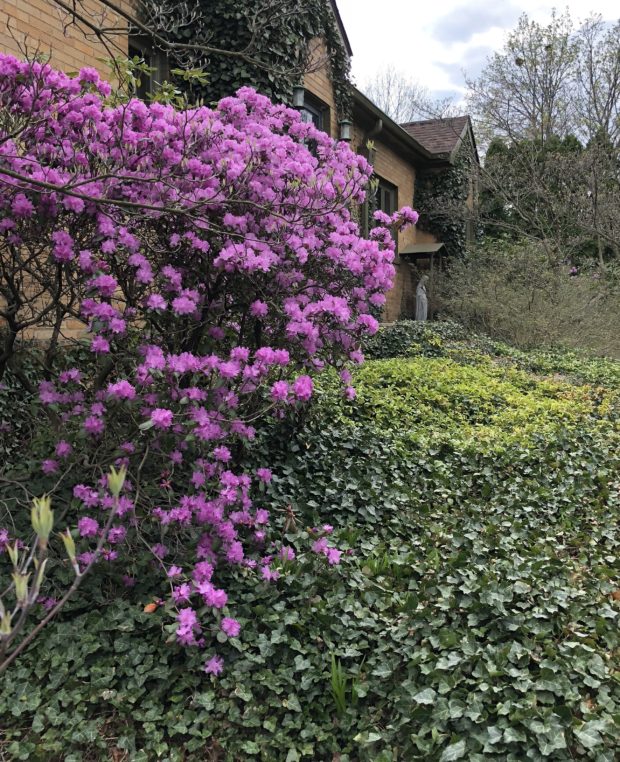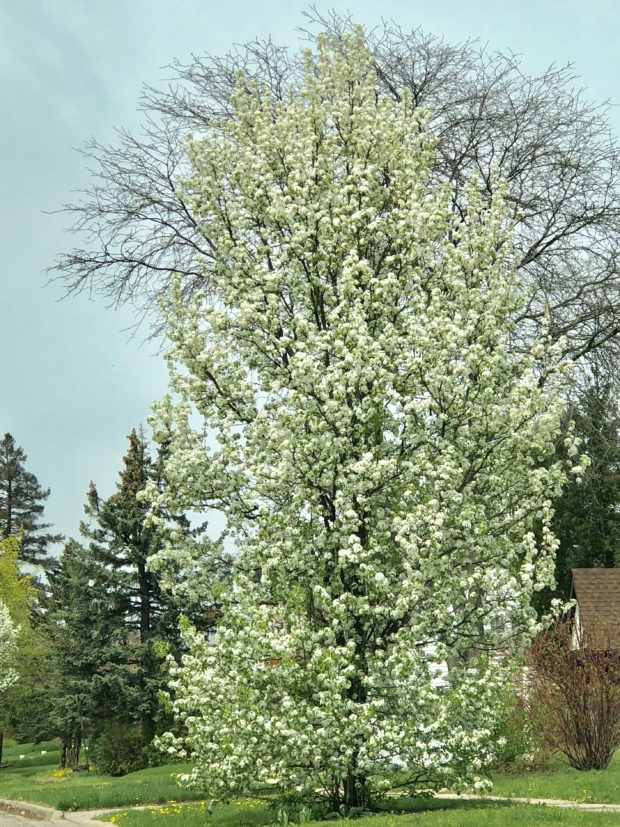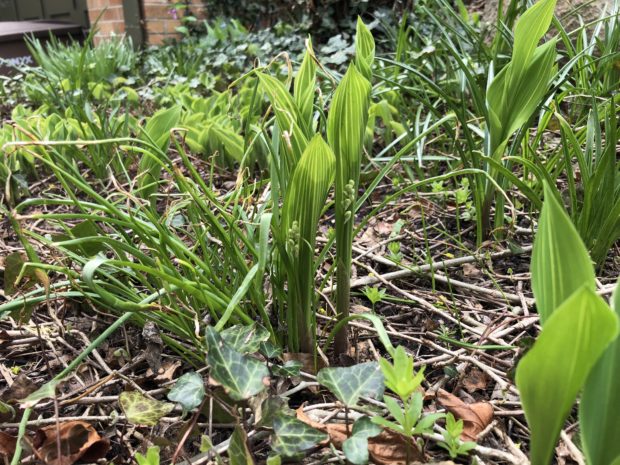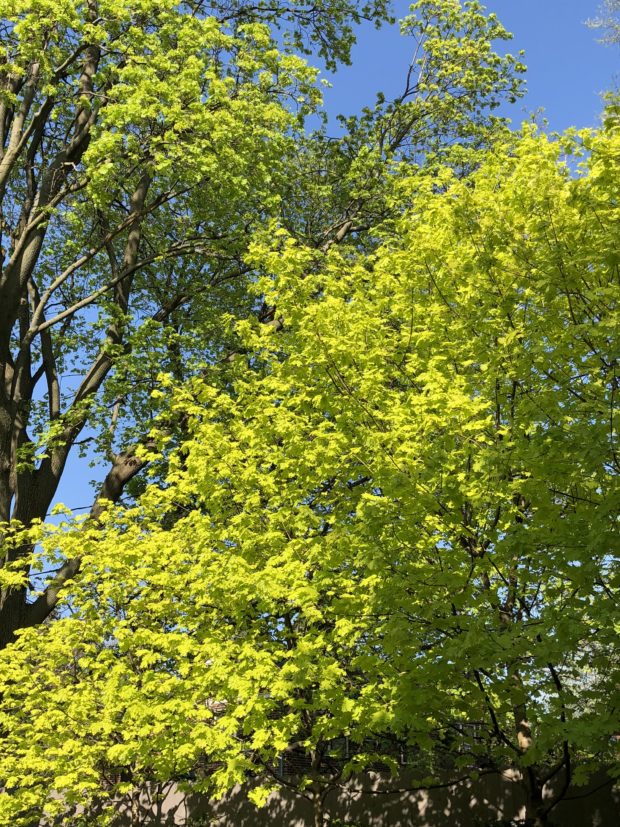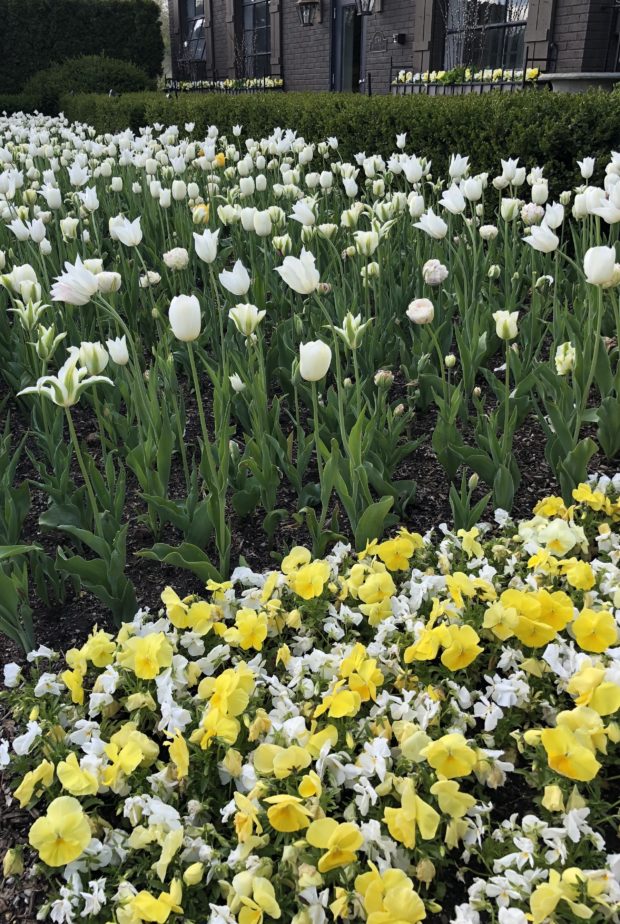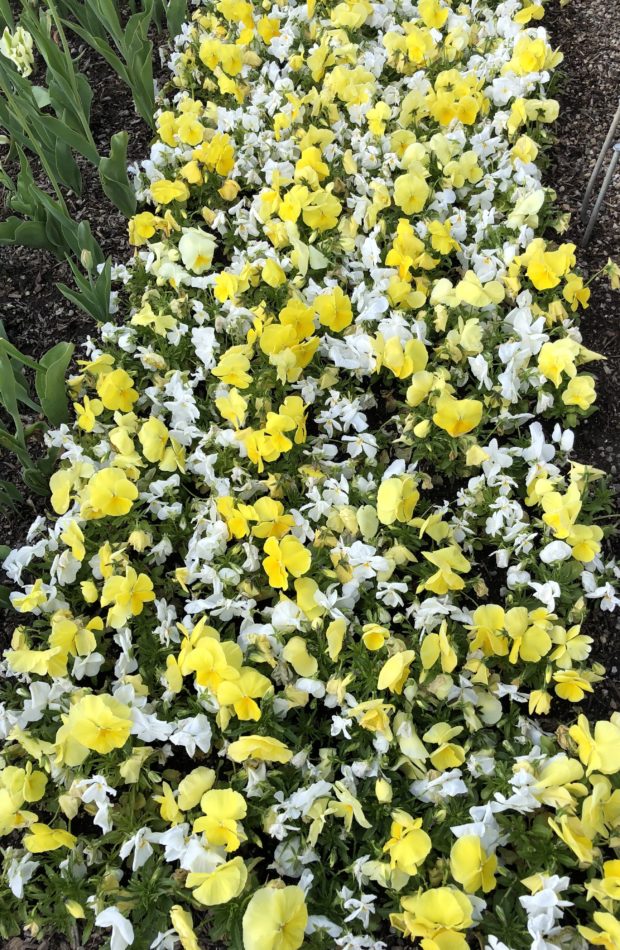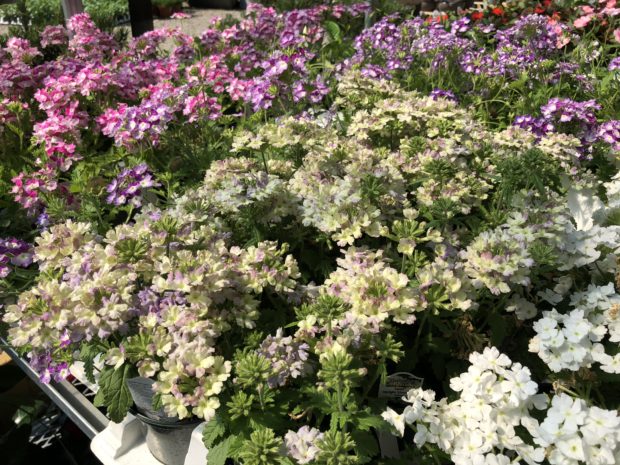 Designing great container plantings asks for thoughtful decisions about lots of visual issues. A container is a landscape in miniature. Every design issue that manages to get addressed in such a confined space means that container will satisfy the viewer on multiple levels. Superb container plantings are layered, organized, and deliberate. I greatly admire container plantings that are visually interesting, whether they be formally or informally imagined. I especially like the organization phase. How do I plant for my clients? I like to know to location of the pots, the size and style of the pots, the architecture of the house, the sun and shade exposure, and the style of planting that most closely represents the point of view of the client. But truth be told, I ask about color first. Color is an incredibly important design element, if for no other reason that everyone reacts individually and strongly to color. The pale yellow and vaguely violet upright verbena named “Limonella” pictured above has a subtle coloration that I find fascinating. My grower, on the other hand, could not decide if it was good or blah. Consequently he only grew a few flats.
Designing great container plantings asks for thoughtful decisions about lots of visual issues. A container is a landscape in miniature. Every design issue that manages to get addressed in such a confined space means that container will satisfy the viewer on multiple levels. Superb container plantings are layered, organized, and deliberate. I greatly admire container plantings that are visually interesting, whether they be formally or informally imagined. I especially like the organization phase. How do I plant for my clients? I like to know to location of the pots, the size and style of the pots, the architecture of the house, the sun and shade exposure, and the style of planting that most closely represents the point of view of the client. But truth be told, I ask about color first. Color is an incredibly important design element, if for no other reason that everyone reacts individually and strongly to color. The pale yellow and vaguely violet upright verbena named “Limonella” pictured above has a subtle coloration that I find fascinating. My grower, on the other hand, could not decide if it was good or blah. Consequently he only grew a few flats.
 There are plenty of seasonal plants that have equally reserved coloration. This bench is home to showy oregano, silver dichondra, variegated licorice and euphorbia “Diamond Frost”. Though they all have subtly different textures, shapes, and habits of growth, the color is uniformly subdued. The color green reads as a neutral color in the landscape for obvious reasons. A pot of white geraniums surrounded by a frothy mix of the aforementioned plants would be quietly satisfying in coloration. The contrast between the unflappable form of the geraniums and the airy and flowing form of the supporting cast provides visual interest on a different level. The fact that each of these plants requires similar light and water means there will be opportunity for each individual plant to thrive.
There are plenty of seasonal plants that have equally reserved coloration. This bench is home to showy oregano, silver dichondra, variegated licorice and euphorbia “Diamond Frost”. Though they all have subtly different textures, shapes, and habits of growth, the color is uniformly subdued. The color green reads as a neutral color in the landscape for obvious reasons. A pot of white geraniums surrounded by a frothy mix of the aforementioned plants would be quietly satisfying in coloration. The contrast between the unflappable form of the geraniums and the airy and flowing form of the supporting cast provides visual interest on a different level. The fact that each of these plants requires similar light and water means there will be opportunity for each individual plant to thrive.
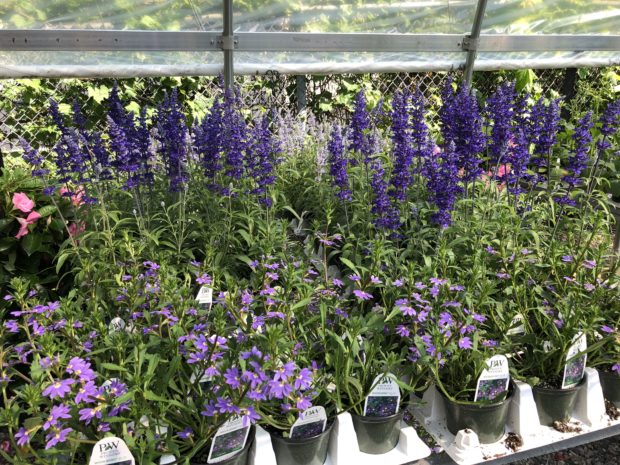 Some seasonal plants are bashful in coloration for other reasons. The Cathedral series of annual salvias are avilable in a range of colors, from white, pale blue, lavender and dark purple. What makes their effect in a container reserved is the fact that they will always sport more foliage than flowers. The individual florets are small. Breeders have worked hard to create a flowering salvia with more visual punch, but I find the quieter bloom habit charming. Scaevola, commonly known as fan flower, features diminuitive lowers all along fleshy green trailing stems. It provides as much volume as color to a container arrangement.
Some seasonal plants are bashful in coloration for other reasons. The Cathedral series of annual salvias are avilable in a range of colors, from white, pale blue, lavender and dark purple. What makes their effect in a container reserved is the fact that they will always sport more foliage than flowers. The individual florets are small. Breeders have worked hard to create a flowering salvia with more visual punch, but I find the quieter bloom habit charming. Scaevola, commonly known as fan flower, features diminuitive lowers all along fleshy green trailing stems. It provides as much volume as color to a container arrangement.
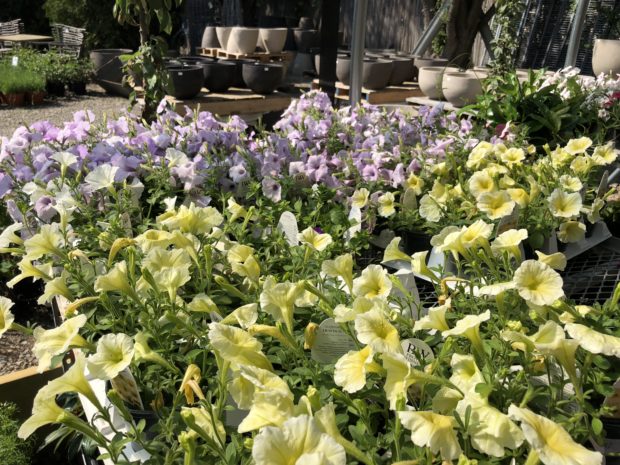 Yellow and pale lilac petunias are subdued in color, and similar in value – meaning the colors do not contrast much. Mixing them with the Limonella trailing verbena is an idea I would like to try. Adding vanilla marigolds to the mix would introduce a like color element with a contrasting height.
Yellow and pale lilac petunias are subdued in color, and similar in value – meaning the colors do not contrast much. Mixing them with the Limonella trailing verbena is an idea I would like to try. Adding vanilla marigolds to the mix would introduce a like color element with a contrasting height.
 These yellow with a blue eye streptocarpus would be a great fit with the yellow and pale lilac petunias, but the science would be all wrong. This plant requires a fairly shady location to prosper. It is always good to keep in mind that good horticulture comes before any other design element.
These yellow with a blue eye streptocarpus would be a great fit with the yellow and pale lilac petunias, but the science would be all wrong. This plant requires a fairly shady location to prosper. It is always good to keep in mind that good horticulture comes before any other design element.
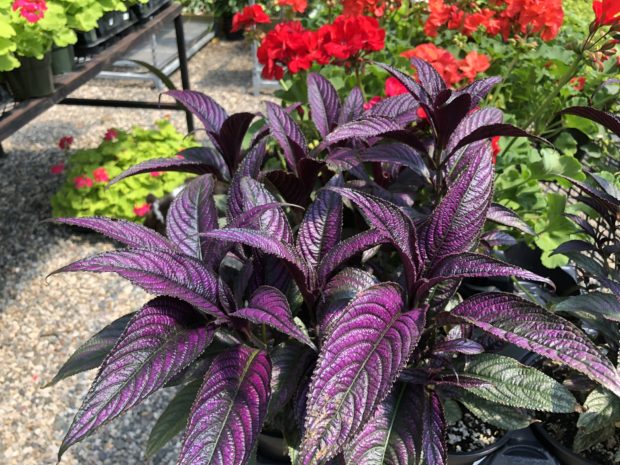 Some tropical plants are anything but bashful. Persian Shield is a plant prized for the brilliant red violet color of its foliage. I have never seen it bloom. That color is the most vibrant given a partial shade location. It may fade in full sun. Red violet is a shade of purple that leans to the red side. Some call this color magenta, or carmine. As I favor harmony in color, and contrast achieved by light and dark, I would plant lilac and or red New Guinea impatiens with it. The red geraniums in the background of this picture accentuates the red highlights in these purple leaves.
Some tropical plants are anything but bashful. Persian Shield is a plant prized for the brilliant red violet color of its foliage. I have never seen it bloom. That color is the most vibrant given a partial shade location. It may fade in full sun. Red violet is a shade of purple that leans to the red side. Some call this color magenta, or carmine. As I favor harmony in color, and contrast achieved by light and dark, I would plant lilac and or red New Guinea impatiens with it. The red geraniums in the background of this picture accentuates the red highlights in these purple leaves.
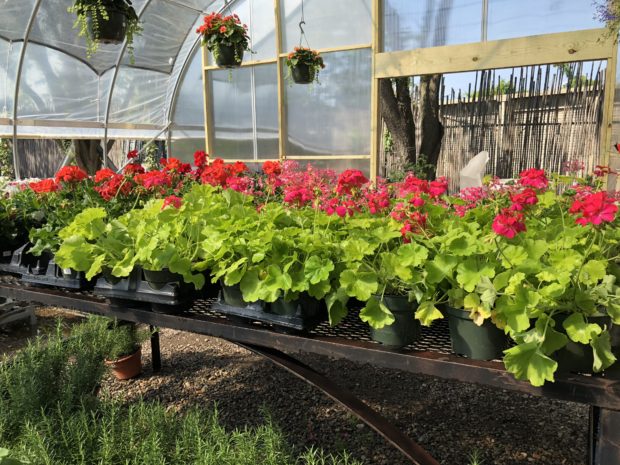 Persian Queen geraniums pack a powerful punch of color. The intense hot pink flowers sit on top of intensely lime green foliage. If bold color is to your liking, this plant delivers the goods. You can calm the color with dark purple petunias, heliotrope, or the softer colored lime licorice – or add flames to the fire with red annual phlox or red seed geraniums. This plant is great for pots that are viewed from afar. There would be no problem spotting even a small container of these in the landscape.
Persian Queen geraniums pack a powerful punch of color. The intense hot pink flowers sit on top of intensely lime green foliage. If bold color is to your liking, this plant delivers the goods. You can calm the color with dark purple petunias, heliotrope, or the softer colored lime licorice – or add flames to the fire with red annual phlox or red seed geraniums. This plant is great for pots that are viewed from afar. There would be no problem spotting even a small container of these in the landscape.  The dahlias are the show stopper darlings of the container world. The colors are intense and jewel like. The sheer size of the flowers is as powerful as the color. Given lots of sun, regular moisture and food, they will bloom profusely. The best flowering actually comes near the end of the season. They are beautiful in September and October.
The dahlias are the show stopper darlings of the container world. The colors are intense and jewel like. The sheer size of the flowers is as powerful as the color. Given lots of sun, regular moisture and food, they will bloom profusely. The best flowering actually comes near the end of the season. They are beautiful in September and October.
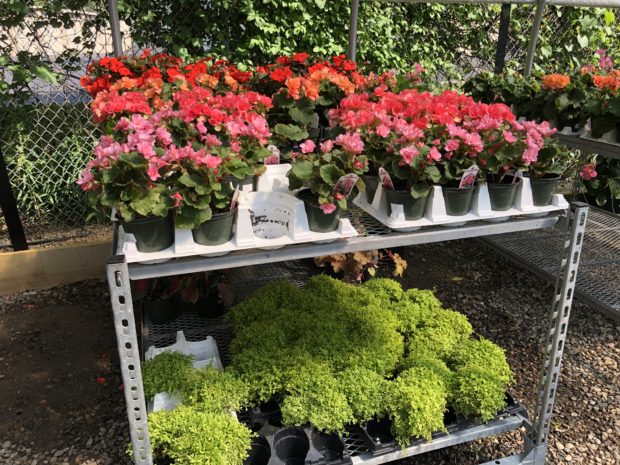 There are plenty of plants for partially shaded locations that have strong color. Begonias are hard to beat. A mix of all the colors available is as effective as a mass of all one color. The less well known lime selaginella, or club moss, can effectively lighten up the shadiest spot. With a regular source of moisture, it will cascade over the edge of a pot.
There are plenty of plants for partially shaded locations that have strong color. Begonias are hard to beat. A mix of all the colors available is as effective as a mass of all one color. The less well known lime selaginella, or club moss, can effectively lighten up the shadiest spot. With a regular source of moisture, it will cascade over the edge of a pot.
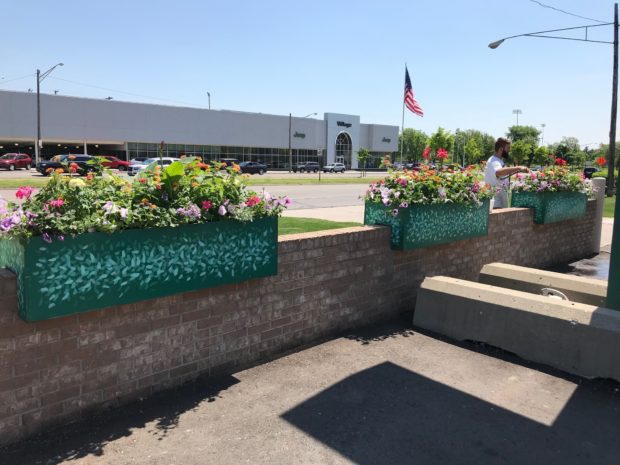 But if you love all and every color equally, and are pleased by representing as many of them as you can in a container, you are not alone. There is something so lavish and exuberant about a mass of mixed color plants. Nature’s colors all go together. If mixed colors are pleasing, then the next most important design element is the overall shape. Plants that grown tall and linear can be balanced by plants that grow low and wide. Airy growing plants can be countered by plants with a prominent structure. All of the contrasting shapes, tectures and colors of green will certainly knit the arrangement together.
But if you love all and every color equally, and are pleased by representing as many of them as you can in a container, you are not alone. There is something so lavish and exuberant about a mass of mixed color plants. Nature’s colors all go together. If mixed colors are pleasing, then the next most important design element is the overall shape. Plants that grown tall and linear can be balanced by plants that grow low and wide. Airy growing plants can be countered by plants with a prominent structure. All of the contrasting shapes, tectures and colors of green will certainly knit the arrangement together.
